Detroit River Tunnel |
|
|---|---|
|
Railroad tunnels have been a popular photographic backdrop since the latter part of the
19th Century; two of the most extraordinary structures are the pair of subaqueous tunnels
that connect Michigan to neighboring Ontario, Canada. The oldest is the St. Clair River Tunnel
between Port Huron, MI and Sarnia, Ont. which was opened to rail traffic in 1891. The submerged
rail highway, which stretched 1.8 miles, was built by the Grand Trunk Western (a Subsidiary
of the Great Western Railway of Canada). The other subsurface tunnel was built by the Michigan
Central Railroad, a New York Central subsidiary, and tied Detroit to near-by Windsor, Ont.,
a distance of 1.6 miles. Known as the Michigan Central Tunnel, it was opened in 1906. Later
named the Detroit Rover Tunnel, it was built as a twin-bore structure whereas the St. Clair
tunnel featured a single bore.
Prior to construction of both tunnels, railroad-owned ferry boats were employed to transport freight and passenger cars across the rivers. Although expedient, the process was inherently slow; thus the need for tunnels that would speed rail-borne commerce between U.S. and Canadian destinations. Outstanding engineering marvels, each tunnel was built in tube sections, floated out into the river, lowered into a trench, and then back-filled in position. The Port Huron Tunnel had a two percent gradient at each end. The Detroit Tunnel had gradients of 2.1 percent at the northern portal and 1.8 at the opposite end. | |
Sections Floated Into Position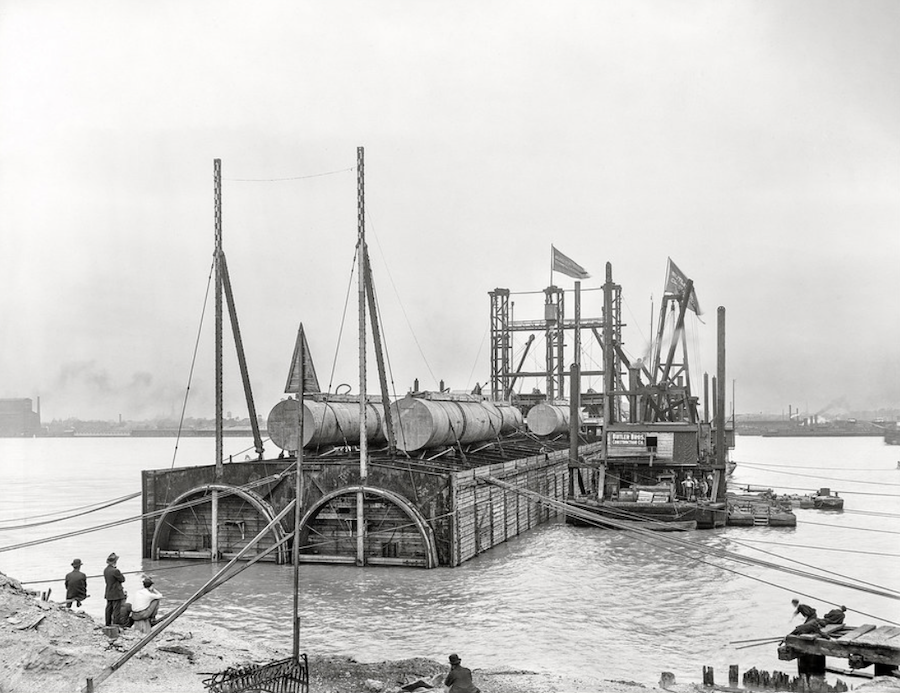 The tunnel was constructed utilizing the immersed tube method in which tunnel sections are prefabricated and then sunk to the bottom of the river. Immersed tube construction is generally faster and cheaper than the alternative of boring a tunnel into the earth. The Michigan Central Railway Tunnel was the first immersed tube tunnel to carry traffic. The tunnel, built at a cost of $8,500,000, is 1 3/8 miles in length from portal to portal.( Both photos by Albert Duce) |
Lowered In-Place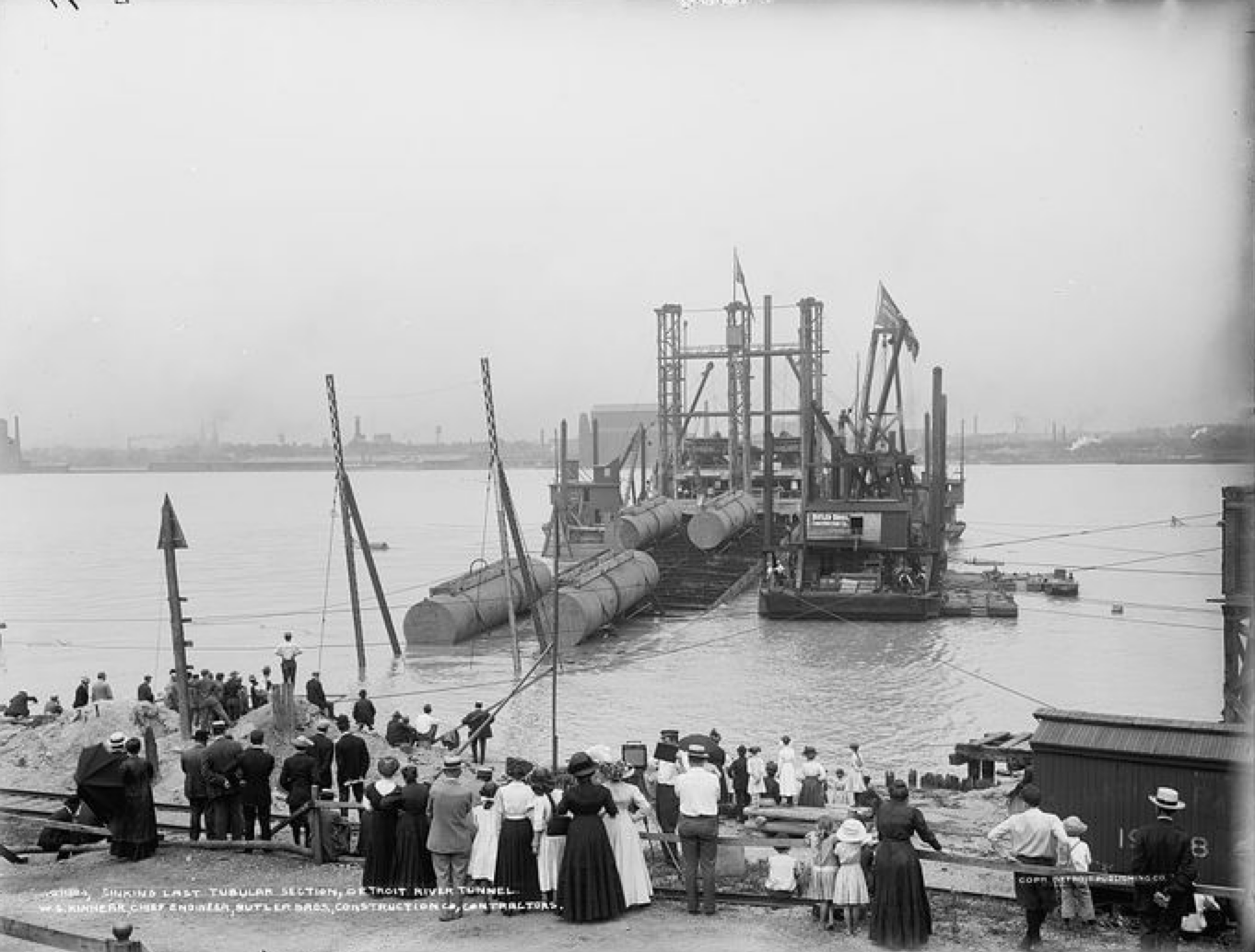 |
New York Central Electric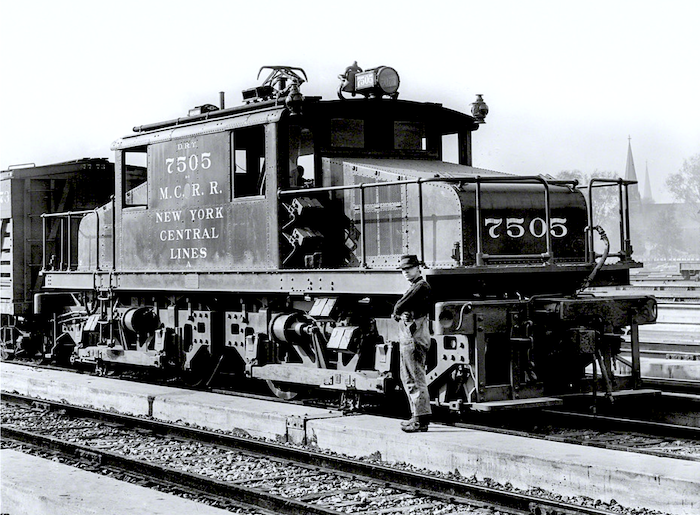 The Alco-GE partnership delivered six electric motors to the Michigan Central in 1910. The 120-ton steeple cabs were designed to haul passenger and freight trains through the Detroit River Tunnel which had a 2.13 percent ruling grade. The dual-mode locos were equipped with overhead wire, third-rail pick-up and articulated trucks. (Detroit Publishing Co. / Library of Congress collection) |
New York Central Steam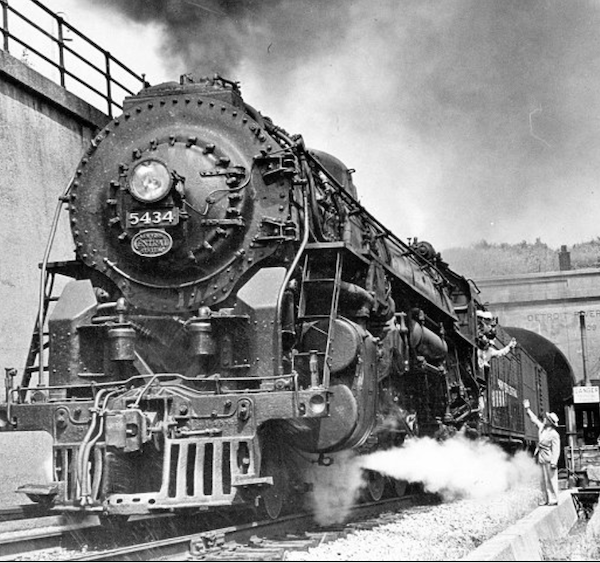 |
New York Central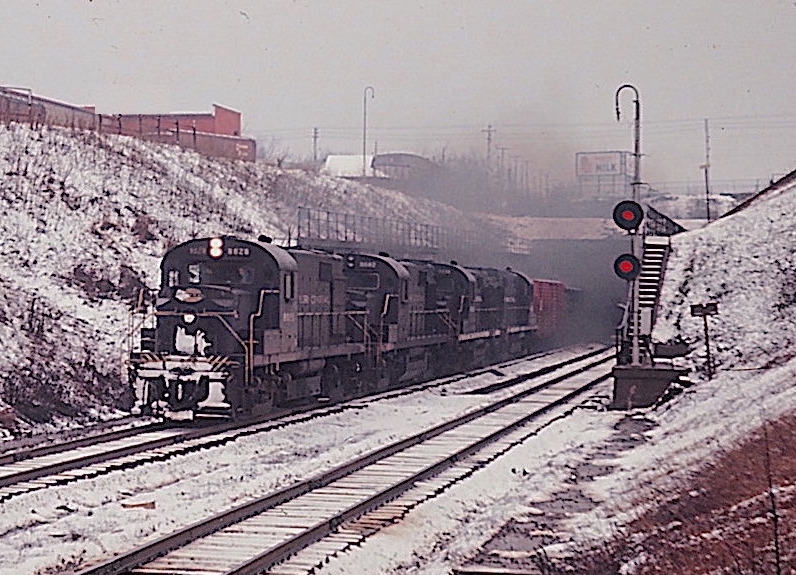 |
Penn Central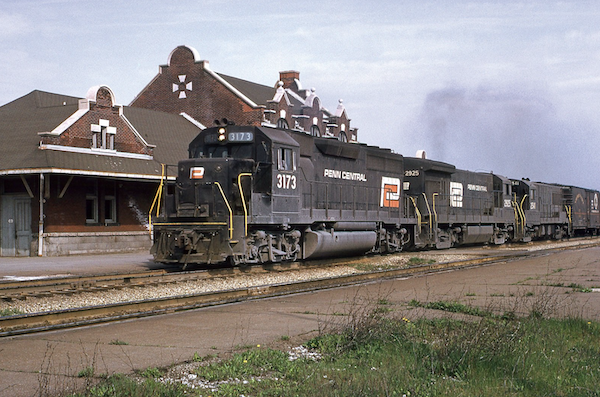 |
Chesapeake & Ohio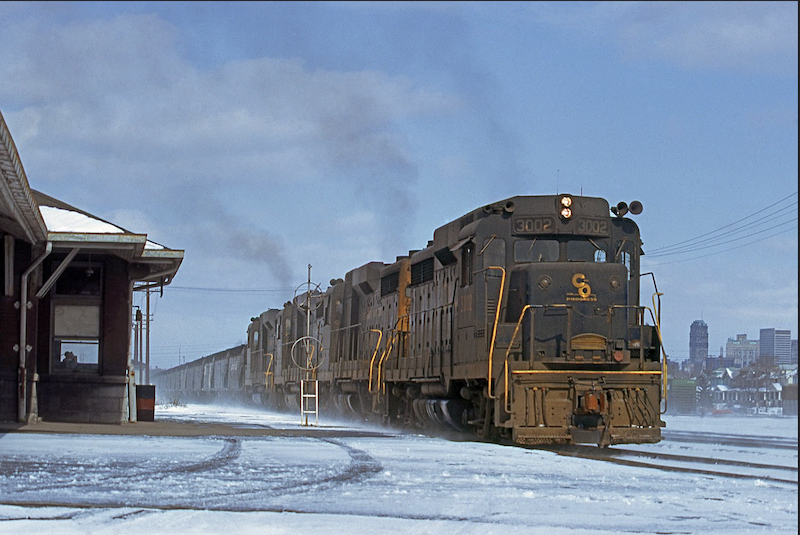 A 10,000-horsepower lash-up of C&O GP30s climb the grade and pass the Penn Central (ex-Canadian Southern) station on the far southside of Windsor. Starting in 1929, C&O trains were a common sight in southwestern Ontario. The 3002's consist was headed for St. Thomas which was the railroad's primary facility in the Province. (Earl Minnis photo 8 February 1975) |
Canadian National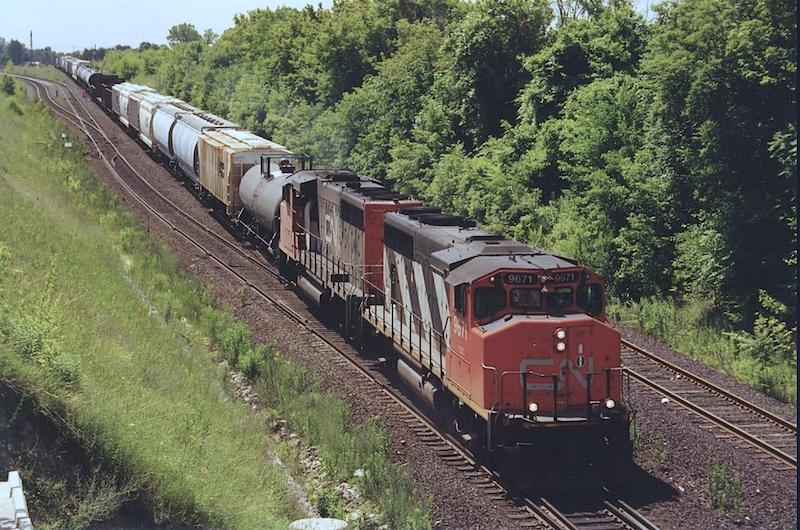 Canadian National 9671 and a companion GP40-2LW ease down the grade towards the entrance to the Detroit River Tunnel. The pair of 3000-hp roadswitchers have interchanage traffic fo Detroit area railroads on a late June morning in 1998. (Photo by: Paul Leach ) |
Conrail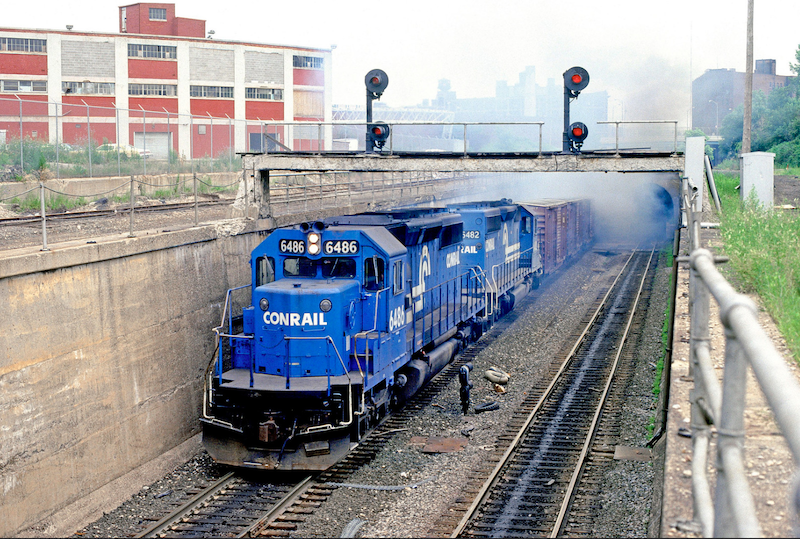 The roar from a pair of EMD V16-645s and a thick exhaust cloud signals the return of "Big Blue's" daily transfer run between River Rouge yard and Ontario. The tunnel's 1.6% grade is a non-issue for an SD40-2's 83,000 pound tractive force. (Charlie Whipp photo) |
Detroit Toledo & Ironton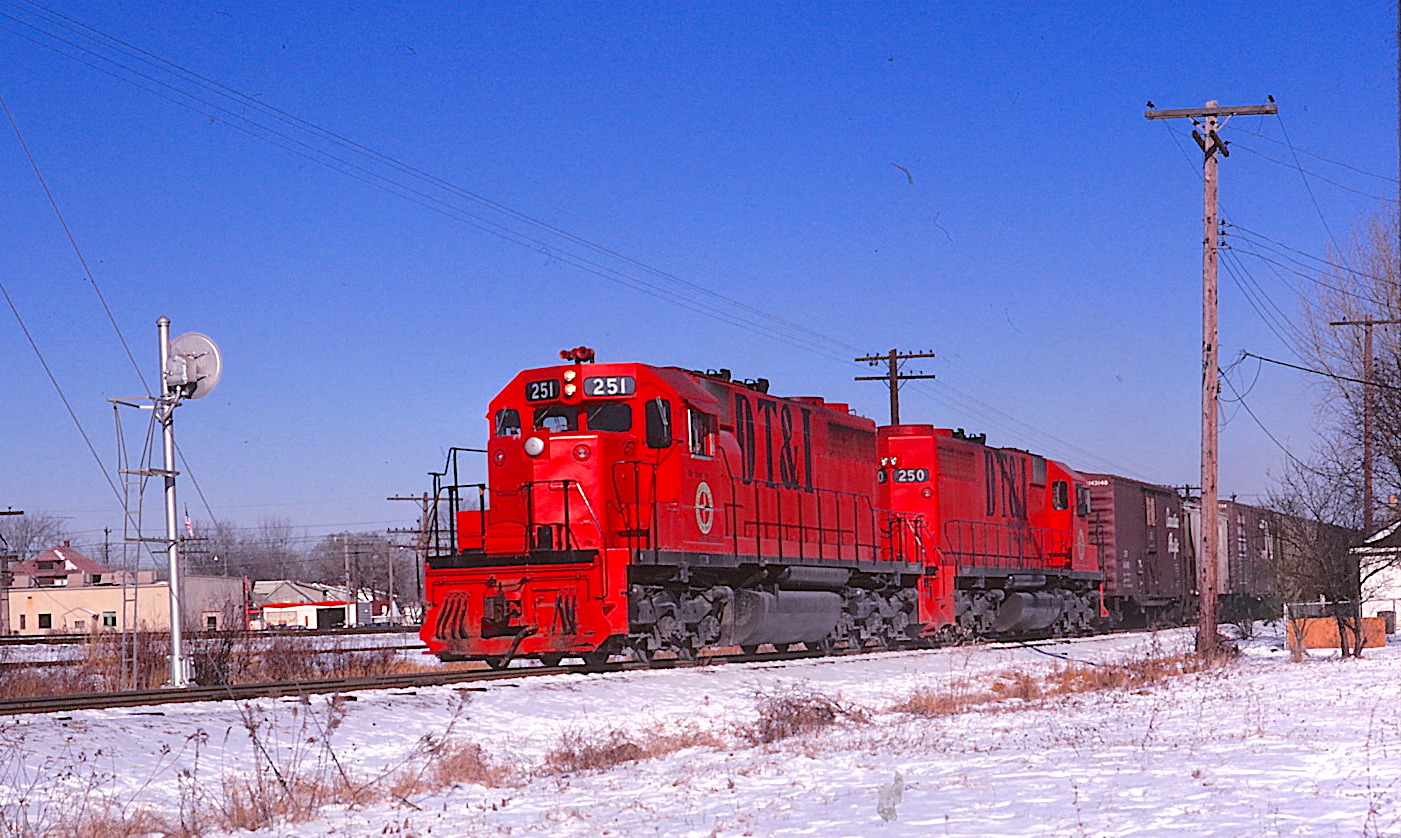 Dubbed the "Canadian Queen" by some railroaders, a pair of DT&I SD38s are back on U.S. soil after using the Detroit River Tunnel to make a run to excahnge cars with the Canadian Pacific in Windsor. The pair of 2000-hp SDs are part of the railroad's first-ever order for six-axle diesels (#250-252). (R. Craig Rutherford photo, 3 February 1970) |
Amtrak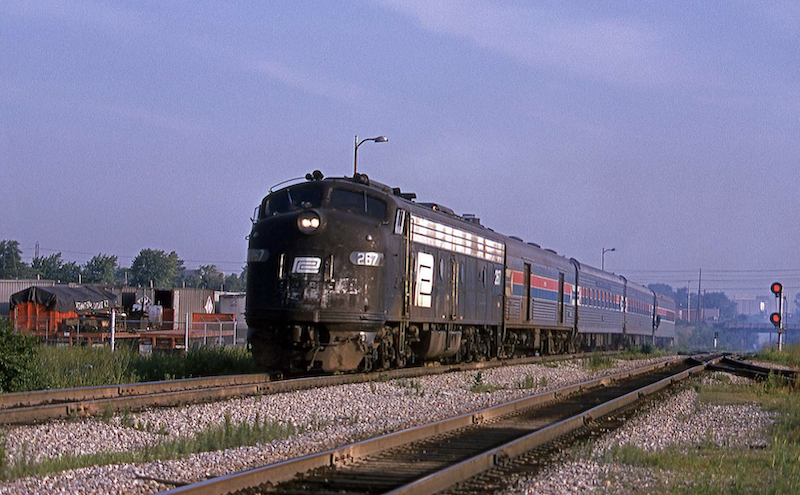 Amtrak's Niagara Rainbow service (Detroit-Buffalo-Albany) exits the Detroit River Tunnel and prepares to stop at the depot in Windsor. With a pair of elderly E8As in the lead, train will also stop at St. Thomas before re-entering the U.S. at Fort Erie, Ontario. The Rainbow connection lasted less than five years (Oct. 1974 to 1/79. (Earl Minnis photo, 18 June 1975) |
Essex Terminal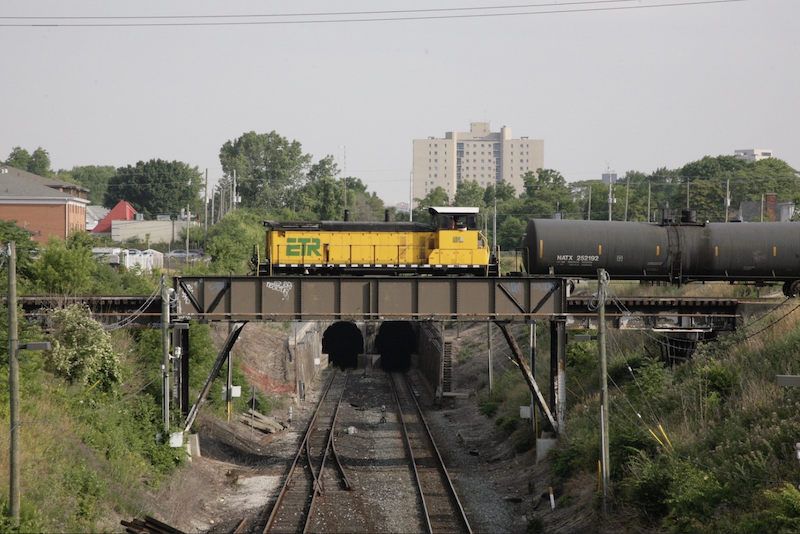 The days of Alcos (S1 and C420) creaking along the tracks of Windsor-based Essex Terminal are only exist in the minds and smiles of gray-beards. This afternoon scene has ETR's only EMD-built SW1500 doing the honors. The tracks below belong to CP Rail; however they also carry mainline and transfer traffic from four other railroads. (Lucas Liska photo, 6 July 2016) |
Acknowledgements: |
| New: 1 April 2024 | |